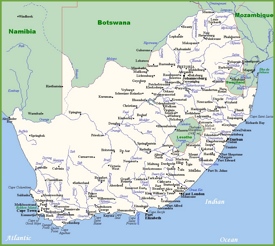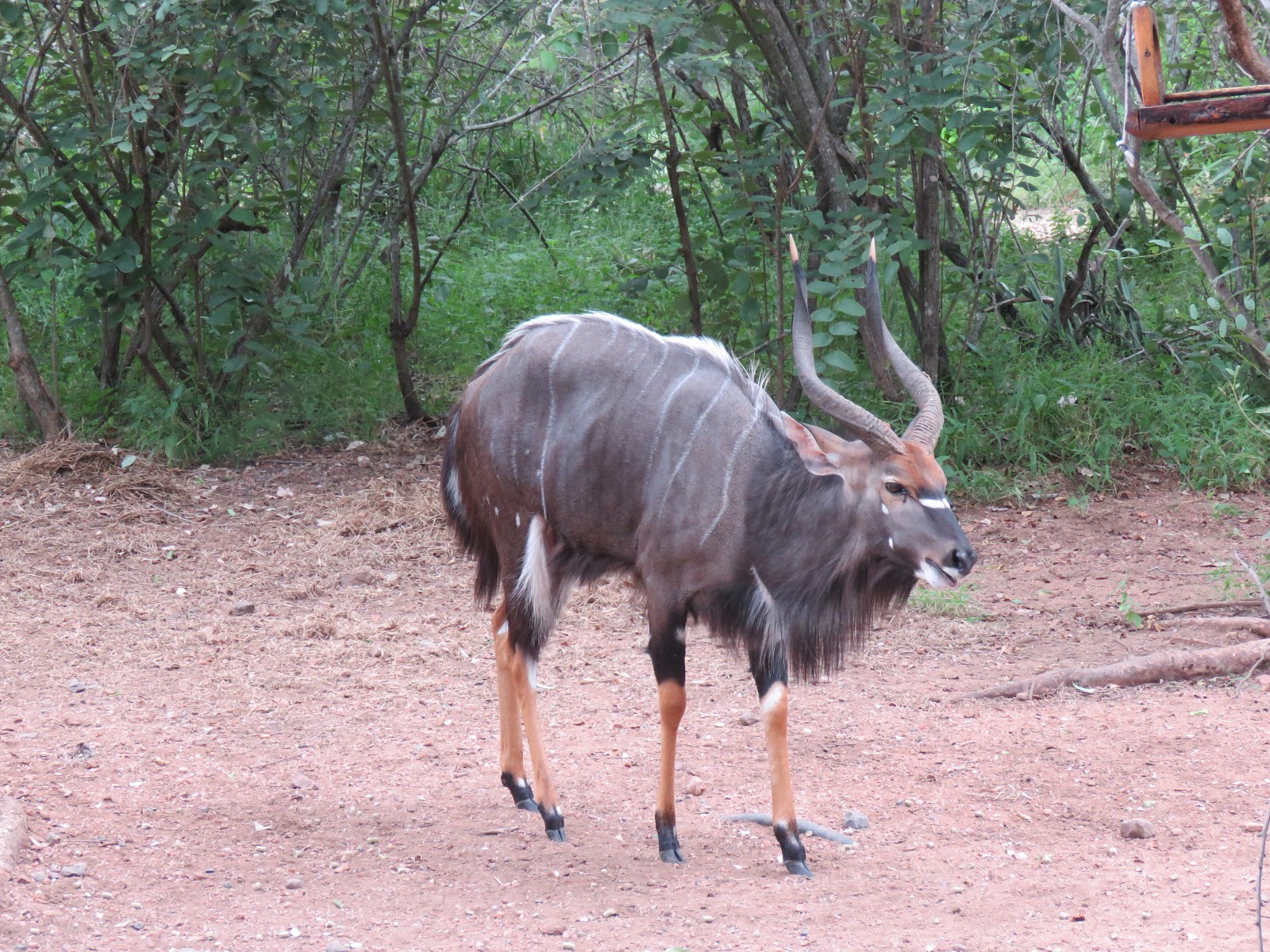
Top Hidden Gems Across South Africa
1. Waterfall Bluff – Eastern Cape
A breathtaking coastal waterfall that plunges directly into the ocean—one of the few of its kind in the world. The dramatic hike to reach it traverses the stunning Wild Coast.
2. Eye of Kuruman – Northern Cape
This massive crystal-clear spring stands as the largest in the Southern Hemisphere, creating an oasis amidst the surrounding semi-desert.
3. Riemvasmaak Hot Springs – Northern Cape
Tucked between granite cliffs, these hot springs provide a peaceful and warm retreat amid striking desert landscapes.
4. Nieu-Bethesda & the Owl House – Karoo
A quirky Karoo village best known for the Owl House—a surreal museum filled with eccentric sculptures and art by Helen Martins—plus cozy coffeehouses and scenic Sneeuberg hikes.
5. Magoebaskloof – Limpopo
A lush valley of forests, waterfalls, and winding trails. Ideal for canopy tours, fly-fishing, hiking, and birdwatching—with beautiful highlights like Debengeni Falls and the village of Haenertsburg.
6. Hogsback – Eastern Cape
An enchanting, Tolkien-inspired village nestled in eucalyptus and redwood forests. Stay in magical Hobbit-like cottages near waterfalls, explore mosaic gardens, and hike scenic trails like the 39 Steps Falls.
7. Stadsaal Caves (Cederberg) – Western Cape
Ancient sandstone caves in the Matjiesrivier Nature Reserve feature San rock art, some of which dates back as far as 8,000 years.
8. Bridal Veil Falls – Sabie, Mpumalanga
A 70 m waterfall resembling a veil, reachable via a short forest footpath. Part of the Panorama Route with options for longer hikes like the Loerie Trail.
9. Boosmansbos Wilderness Area – Western Cape
This 142 km² wilderness offers dramatic gorges, mountain fynbos, and rare forests. Ideal for multi-day hikes and immersing in unique biodiversity.
10. Madikwe Game Reserve – North West Province
A malaria-free reserve where you can still spot the Big Five and endangered African Wild Dogs, but with fewer crowds than Kruger.
11. Augrabies Falls National Park – Northern Cape
Often described as South Africa’s “mini Grand Canyon,” the Orange River cascades through dramatic rock formations—especially powerful after summer rains.
12. Chrissiesmeer (Lake District) – Mpumalanga
A tranquil region with over 270 lakes, ideal for birdwatching—see flamingos, pelicans, and enjoy folklore-rich history.
13. eMakhosini Ophathe Heritage Park – KwaZulu-Natal
A culturally significant reserve celebrating Zulu heritage, where you can also encounter black rhinos, giraffes, and buffalo in a historic landscape.
14. Grootbos Private Nature Reserve & Florilegium – Western Cape
A biodiverse UNESCO-acknowledged fynbos reserve offering botany safaris and the unique Hannarie Wenhold Botanical Art Gallery featuring botanical illustrations and pollinator portraits.
Locals Share Their Own Hidden Finds
-
Cederberg Wilderness, Paternoster, Montagu’s hot springs, Barrydale: beloved by locals for their natural beauty and charm.
“Paternoster: a charming little fishing village that feels like stepping back in time.”
“Cederberg Wilderness Area, for those who love the outdoors, the ancient rock formations and San rock art are a must-see.” -
Mountain Sanctuary (Magaliesburg): a hike through crystal-clear rock pools—now requires a guide, but still a hidden gem.
-
Scenic Trails & Natural Valleys:
“Mariepskop mountain… mistbelt forest… multiple viewpoints… almost no one goes there.”
“Parys… has its own little Eiffel tower… it’s hidden.”
Great suggestions from fellow adventurers in the know.
Explore with Intention
-
Nature lovers: Try Hogsback, Waterfall Bluff, Magoebaskloof, Stadsaal Caves, or Bridal Veil Falls.
-
Quiet luxury getaways: Nieu-Bethesda’s quirky art scene or remote solitude at Riemvasmaak Hot Springs.
-
Wildlife & Conservation: Madikwe, eMakhosini Park, or Grootbos for unique biodiversity and cultural context.
-
Unique landscapes: Boosmansbos, Chrissiesmeer, and Augrabies Falls offer dramatic visuals and serenity.
We’ve only visited a few of the above. Once we arrive in Marloth Park, we don’t want to leave, as every day is treasured, allowing us to engage in precisely what we choose to do while living in this exquisite bush.
Be well.
Photo from ten years ago today, September 9, 2015









































































































